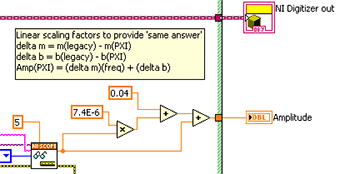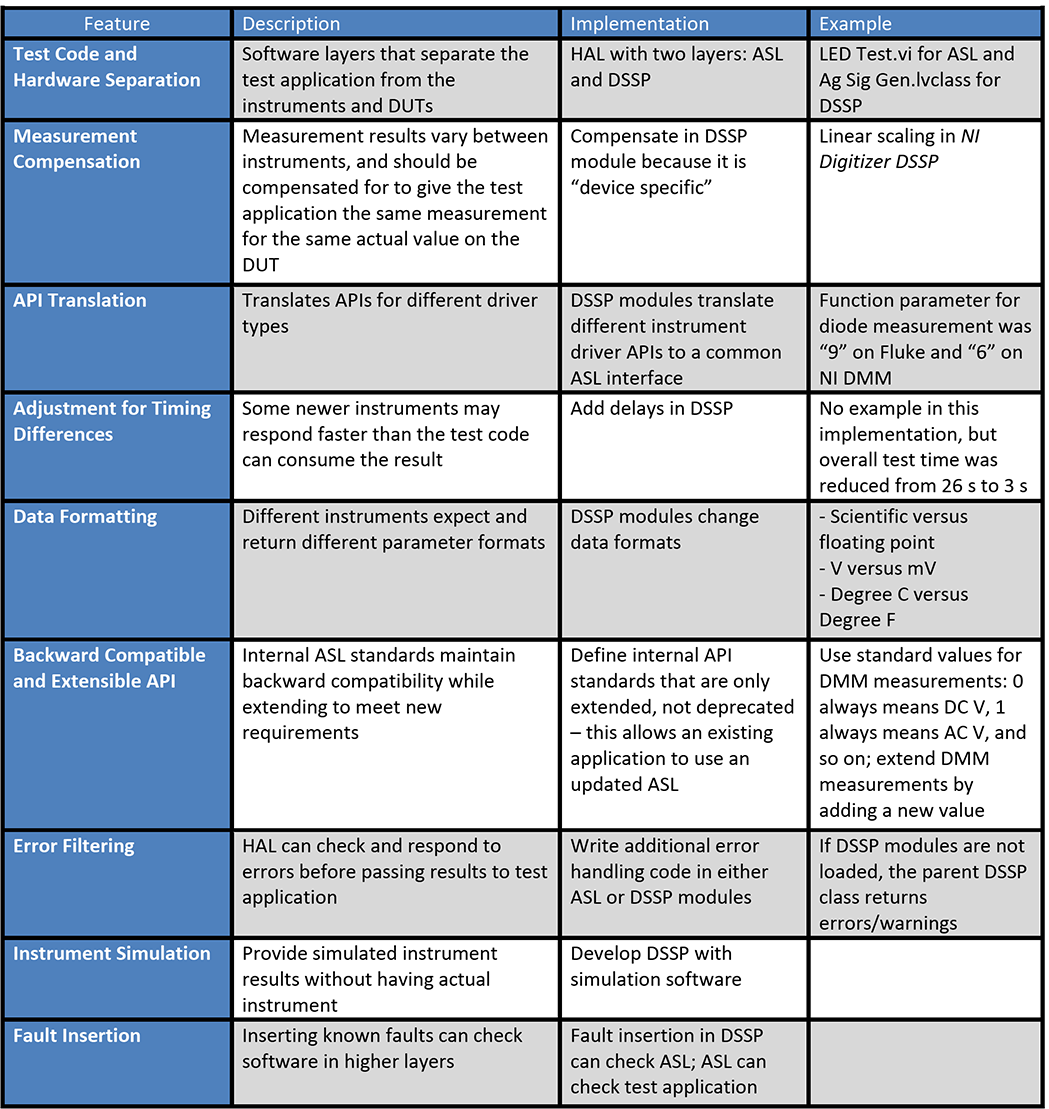LabVIEW如何减少下一代测试系统中的硬件过时5 点击:299 | 回复:0
LabVIEW如何减少下一代测试系统中的硬件过时5
Steps to Replace Instruments
Performance Requirements
The important consideration to make when replacing instruments isthat the replacements must meet your requirements, usually by having equal orbetter measurement functions. For example, a replacement DMM should have anequal or better resolution and sampling rate (among other things).
Configuration
After you have procured suitable instruments, you need to update theconfiguration file with the hardware resource information. Usually this willrequire you to configure the instruments in whichever utility you use (MAX isused for NI-VISA and NI modular instruments).
DSSP Development and Testing
After you update the configuration file, you should start developingand debugging the new DSSP modules for the new instruments. It is recommendedthat you replace only one instrument at a time so you can debug your new DSSPwith the existing “proven” DSSPs. Either way, you should use a “golden DUT” todetermine instrument differences and compensate for them in the new DSSPmodule. Through the course of developing and testing the replacement DSSPmodules, you start out by testing only one new module (and the accompanyinghardware) to see if there are any differences for which the DSSP needs tocompensate. In this example, the testing exposes a scaling difference between theTektronix scope measurements and the NI digitizer measurements. The solution isto add linear scaling to the NI digitizer DSSP module as shown in Figure12.
When updating the test hardware, and the corresponding DSSP modules,you do not necessarily have to do a one-to-one replacement. For instance, ifyou have a signal generation function and a DC voltage measurement functioncurrently implemented with two separate instruments, the replacement instrumentcould be “synthetic” and implement both signal generationand DC voltage measurement. This is one of the advantages of anapplication-specific API and having two layers within the HAL.
更换仪器步骤
性能需求
更换仪器时要考虑的重要事项是,更换的仪器必须满足您的要求,通常是具有相同或更好的测量功能。例如,替换的DMM应该具有相同或更好的分辨率和采样率(在其他方面)。
配置
在采购到合适的设备后,需要更新配置文件,使配置文件中包含硬件资源信息。通常,这将要求您在任何您使用的实用程序中配置仪器(MAX用于NI- visa和NI模块化仪器)。
DSSP开发和测试
在更新配置文件之后,您应该开始为新仪器开发和调试新的DSSP模块。建议您一次只更换一个仪器,这样您就可以用现有的“经过验证”的DSSP调试新的DSSP。无论哪种方式,您都应该使用“黄金DUT”来确定仪器差异,并在新的DSSP模块中对其进行补偿。在开发和测试替换DSSP模块的过程中,您首先只测试一个新模块(以及附带的硬件),以查看是否存在DSSP需要补偿的任何差异。在本例中,测试暴露了泰克示波器测量值和NI数字化仪测量值之间的缩放差异。解决方案是在NI数字化仪DSSP模块中添加线性缩放,如图12所示。
当更新测试硬件和相应的DSSP模块时,您不一定要做一对一的替换。例如,如果您有一个信号生成功能和一个直流电压测量功能,目前由两个单独的仪器实现,那么替代仪器可以是“合成的”,并同时实现信号生成和直流电压测量。这是特定于应用程序的API的优点之一,并且在HAL中有两层。

Only the instruments, the DSSPs, and the XML configuration filechanged. The top level test application and test results did not change. Themain benefits of this hardware replacement process are that the top level test applicationand the test results were not altered. Also, once an instrument has beenintegrated into the HAL, it can be interchanged and the DSSP can be reused byother test applications and extended if necessary.
HAL Features
HALs are useful because of the features that they implement. Table 3lists the main features of HALs with a short explanation of each.
只有工具、dsps和XML配置文件发生了变化。顶层测试应用程序和测试结果没有改变。这个硬件替换过程的主要好处是顶级测试应用程序和测试结果没有改变。此外,一旦仪器集成到HAL中,它就可以相互交换,DSSP可以被其他测试应用程序重用,并在必要时进行扩展。
HAL特征
HAL之所以有用,是因为它们实现了一些特性。表3列出了HALs的主要特征,并对每个特征进行了简要解释。

需要说明的是,上述的例程和文档,都是可以下载的,双击即可打开,其中压缩文件是可以采用粘贴复制的方式,拷贝到硬盘上。这不是图片,各位小伙伴看到后尝试一下,这个问题就不用加微信咨询了。有关LabVIEW编程、LabVIEW开发等相关项目,可联系们。附件中的资料这里无法上传,可去公司网站搜索下载。
楼主最近还看过
- 求PLC 及其外围电路仿真软件
 [3528]
[3528] - EPLANP8部件库导入时意外丢失...
 [5318]
[5318] - PLC常用的几种软继电器
 [2521]
[2521] - 用什么软件画时序图?
 [5950]
[5950] - WIN7 安装下 STEP 7 MicroW...
 [6843]
[6843] - wincc报表选择时间间隔
 [4875]
[4875] - 求助施耐德公司的 MP7与CON...
 [6165]
[6165] - 请问哪一种组态软件可以编译...
 [2023]
[2023] - 请教:工控机经常自动重启原因...
 [2103]
[2103] - 送三菱触摸屏软件GT Designe...
 [2754]
[2754]

官方公众号

智造工程师
-

 客服
客服

-

 小程序
小程序

-

 公众号
公众号

















 工控网智造工程师好文精选
工控网智造工程师好文精选
